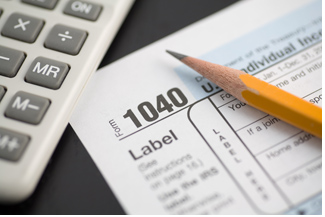Innocent Spouse Relief Requirements
"Classic"/Original Innocent Spouse Relief Requirements for Qualification (Section 6015(B))
This type of relief can be seen as the "classic" type of innocent spouse relief. This was the original type of relief before additions were made and two more forms of innocent spouse relief were created. The following is a list of requirements you need to meet in order to qualify for Innocent Spouse Relief. You must meet all of the requirements in order to qualify.
- You filed a joint return with your spouse or former spouse which reported an understatement of tax as a result of erroneous items of your spouse or former spouse.
An understatement of tax is reporting less tax owed than should have been reported. Typical erroneous items include omissions of income, understatements of income, overstatements of deductions, misstatements of basis in property, over claims of exemptions and credits, and arithmetical additions, subtractions, and transfers. There has to be some bona fide understatement of tax on the joint return that was filed. This amount must be real and determinable in amount. This amount must be attributable to some erroneous item or items on the return by the other spouse. Innocent oversights and harmless errors do not count. If there are many erroneous items, each item should be assigned to a spouse and then it can be argued that one spouse is the main innocent spouse as a result of having the majority of the errors caused by the other spouse. An example of an erroneous item and an understatement of tax can be if your spouse worked as waiter/waitress and they earned $70,000 over the period of a year and only reported $45,000. - At the time you signed the joint return, you did not know, or did not have any reason to know, that there was an understatement of tax due to an erroneous item/items. In the example above, if you knew your spouse earned more than they actually reported, you will not be able to qualify for this type of relief. You must have had no reason to know and should be able to prove that you did not know.
- Based on the circumstances, it would be unfair to hold you liable for the understatement of tax. The unfairness is determined by the IRS based on your individual situation. Some examples of what the IRS (or state) will take into consideration when looking at your case are the following:
•If you received a considerable benefit from the understatement of tax.
•If your spouse/ex-spouse abandoned you.
•If you and your spouse have been divorced or legally separated.
•If you received benefit on the return from the understatement of tax.
If you DO meet all of the requirements of "classic " Innocent Spouse Relief
1. Follow the steps for filing for innocent spouse relief: Steps for Filing Innocent Spouse Relief
2. Request professional assistance: Professional Innocent Spouse Relief Help
If you DO NOT qualify for "classic" innocent spouse relief, it is possible that you may qualify under another mechanism of innocent spouse relief listed below.
About
Do you qualify for Innocent Spouse Relief?
This site has all the information you need to understand what is required in filing for innocent spouse relief. Many times this information can be difficult to understand and we can help connect you with a tax expert in order to make sure you get the relief you need. Even if you do not qualify for innocent spouse tax relief, our tax professionals are experts in IRS tax law and have a proven record of settling tax debt for a fraction of what is actually owed.
If you need assistance filing for Innocent Spouse, or would like a free consultation to determine if you would actually qualify, please fill out the form for a free consultation.
The Consultation we provide is free of charge and comes with no obligation. Get your options and you choose!



